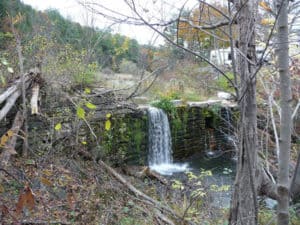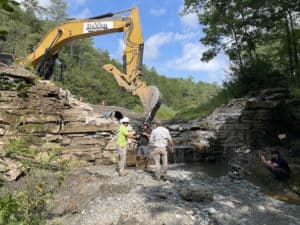Earlier this month, the health and function of North Breton Brook in Castleton was improved through the removal of the Pelletier Dam off East Hubbardton Road. The dam, along with 15,000 cubic yards of sediment, was removed from the stream bed, reconnecting the river to its natural path and flow.

The Pelletier Dam removal was documented in the photos featured. Now the North Breton Brook in Castleton flows unimpeded creating new habitats.
The Pelletier Dam was derelict, which means it had not been used for its original purpose as a marble mill in decades. Vermont Fish and Wildlife acquired the dam after the mill closed and recognized the benefits of removing the dam.
Dams are a barrier to the passage of the river and aquatic life; they obstruct fish and other animals from traveling the river, block nutrients from feeding plants downstream, warm the temperature of the stream by creating a pond behind the dam (cold water protects fish), elevate the water which can increase flood levels, and become a public safety and infrastructure concern for public access at the river and potential damage to homes, roads, and utilities if the dam fails on its own.

The removal of the dam has opened approximately 37 miles of wild trout habitat. For the first time in over 200 years, trout will be able to move freely up and downstream, reconnecting populations and expanding habitat. The removal of the dam also restores about 3,000 feet of riparian floodplain and habitat that were previously buried under the pond. This riparian area will act as a sponge, soaking up rain during flood events and improving flood resiliency.
Now that the dam and sediment have been removed, the stream bank and surrounding floodplain area will be planted with native trees and shrubs.





